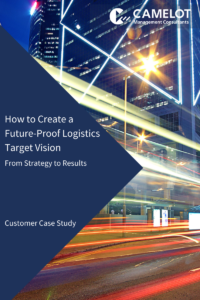Warehouses offer a typical application domain for innovative technologies, such as robot technology, drones or Smart Glasses. Especially in warehouses with various products, a high handling frequency and lot of manual work, Smart Glasses offer an easy implementation approach with high improvement potentials. How is it then that many Smart Glasses implementations fail? User acceptance is an often underestimated criterion; without it, your project founders. So, a closer look at the user pays off.
The advantages like error reduction or increased process efficiency do not need to be explained in detail here. Smart Glasses are no longer new on the market and by now sophisticated and specialized products by several providers are available. The question arises why Smart Glasses implementations are still an exception despite mature products and a wide range of utilization in the logistics. In a recent study the “human” factor is cited as the main reason for foundered Industry 4.0 projects. The biggest challenge for a company is preparing its employees for changes in work organization and processes.
So far, there is little experience reported on employee-oriented implementations of Smart Glasses in warehouses. But user acceptance and usability of Smart Glasses are essential factors. In the following, we introduce 5 key points for a successful implementation including these aspects.
- Use the right level of change management
- Involve employees
- Communicate openly
- Choose the appropriate hardware
- Set common goals
Use the right level of change management
Change management is a nagged term, the content often remains cryptic. Therefore, forbear from making only theoretically use of change management. Instead, make changes and their management tangible. Talk in detail about what will change in processes and the way of work with Smart Glasses. In concrete terms, the daily handling of warehouse workers will change. Explain which processes will change in how far and accompany the changeover. The linkage of a WMS with Smart Glasses generates data. Make clear who can use this data for what purposes and what new opportunities this opens. A detailed and end-to-end accompanied approach to changes eases the acceptance for Smart Glasses.
Involve employees
Employees might be reluctant to the changes Smart Glasses entail. Permanent physical contact, possible perception limitations or the feeling of an external machinery control are typically inhibition thresholds. Accordingly, the convenience of wearing, the correct handling and the actual expansion of mobility through free hands must be discussed and experienced. User acceptance increases when employees are involved at an early stage and enabled to co-determine an implementation project.
Through a joint dry run of Smart Glasses in the warehouse operations with management and warehouse staff, employees deal actively with the new technology and can introduce new aspects about process sequences, potential difficulties and handling in the everyday work.
Communicate openly
Employees who have not previously had contact with Smart Glasses might be skeptical. “What do we need this for?”, “What does this mean for me?” and “How am I supposed to use this?” are common questions that arise. Employees may be concerned about their workplace being rationalized or excessive demands by the technical innovations. Therefore, information from the management must be transparent and complete to address concerns at an early stage. A mutual communication about doubts and worries as well as goals and benefits yields the employees’ trust and motivation.
Choose the appropriate hardware
Of course, Smart Glasses should be comfortable and not disturb the view when wearing. In addition, a user-friendly software and an intuitive using guidance induce a positive experience for the employees. The right hardware always depends on the conditions and activities in a warehouse. Do employees wear safety glasses? How much operation is there in the warehouse? What kind and amount of information is needed? Overviews of products and providers for different practices, e.g. by the Fraunhofer Venture/IPT, or benchmark implementation cases support a proper decision. For example, in a pilot project on Smart Glasses at Bosch , employees with a visual aid had difficulty reading the work instructions on the display of one product tested. The glasses of another provider, with which you look through the glasses like normal glasses, worked better for them. Therefore, give employees the opportunity to co-decide on the hardware selection. Those who are dissatisfied with their work material, will not use it (correctly).
Set common goals
After the introduction of Smart Glasses, set common goals together with the employees. Document these goals in form of KPIs for an after-implementation comparison. Smart Glasses primarily provide support for increasing efficiency, reducing the error rate, optimizing picking ways and implementing safety in the warehouse. Set milestones to analyze the changed KPIs and communicate improvements to your employees. Quick wins, in particular, have a motivating effect. Generally, working for a common goal accelerates user acceptance easily and successfully.
Many well-known companies, including Volkswagen, Bosch or DHL, have already taken the step towards an innovative warehouse with Smart Glasses. A successful implementation with economic results is not a coincidence, but a question of the right project implementation. The experience of our warehouse management project teams and the bundling of competencies, like recently done with Pulseshift, make Camelot a frontrunner in data-driven transformation management. The beneficial use of technologies and our support will exactly make your transformation of workflows in the warehouse become a success.
We would like to thank Didier Gerschheimer for his valuable contribution to this article.

